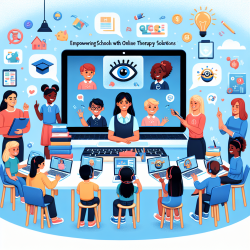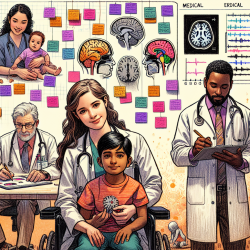As practitioners dedicated to improving mental health outcomes for children, it's crucial to continually refine our approaches based on the latest research. A recent study titled Patient-Oriented Research to Improve Internet-Delivered Cognitive Behavioural Therapy for People of Diverse Ethnocultural Groups in Routine Practice provides valuable insights on how to enhance online therapy services for ethnoculturally diverse populations. This blog will explore key findings and actionable steps to integrate these insights into your practice.
Understanding the Research
The study, conducted by a multidisciplinary team, employed a patient-oriented research approach to adapt Internet-Delivered Cognitive Behavioural Therapy (ICBT) for people from diverse ethnocultural backgrounds. The working group included individuals with lived experience, community representatives, ICBT clinicians, managers, and researchers. They analyzed feedback from 278 past patients and conducted interviews with 16 current patients, six community representatives, and three clinicians.
Key Findings
- High Satisfaction with Core Techniques: Most patients reported satisfaction with core cognitive-behavioral techniques like Thought Challenging, Controlled Breathing, and Graded Exposure.
- Need for Inclusive Materials: Suggestions for improvement focused on making treatment materials more inclusive rather than changing the cognitive-behavioral model itself.
- Barriers Identified: Language barriers, cultural stigma, and lack of relatable content were significant obstacles for ethnoculturally diverse patients.
Actionable Steps for Practitioners
Based on these findings, here are some practical steps you can take to improve your online therapy services:
1. Simplify Language
Remove idioms and academic jargon from therapy materials. Use straightforward, descriptive language to ensure that concepts are accessible to everyone, regardless of their cultural or educational background.
2. Diversify Content
Incorporate diverse case stories, examples, and imagery that reflect the varied experiences of ethnocultural groups. This can help make the therapy more relatable and effective.
3. Add Audiovisual Elements
Introduce videos and other multimedia elements to complement written materials. This can help engage patients who may struggle with extensive reading.
4. Enhance Cultural Training for Clinicians
Provide additional training for clinicians to understand cultural concepts of distress and deliver culturally informed care. This can include role-playing exercises and discussions on cultural sensitivity.
5. Improve Community Outreach
Increase awareness of your services through targeted outreach to community organizations that serve ethnocultural groups. Use diverse imagery and testimonials in your promotional materials to normalize seeking mental health care.
Conclusion
Implementing these patient-oriented research findings can significantly improve the accessibility and effectiveness of online therapy for ethnoculturally diverse populations. By making these adjustments, we can ensure that all children, regardless of their background, receive the best possible mental health care.
To read the original research paper, please follow this link: Patient-Oriented Research to Improve Internet-Delivered Cognitive Behavioural Therapy for People of Diverse Ethnocultural Groups in Routine Practice.










